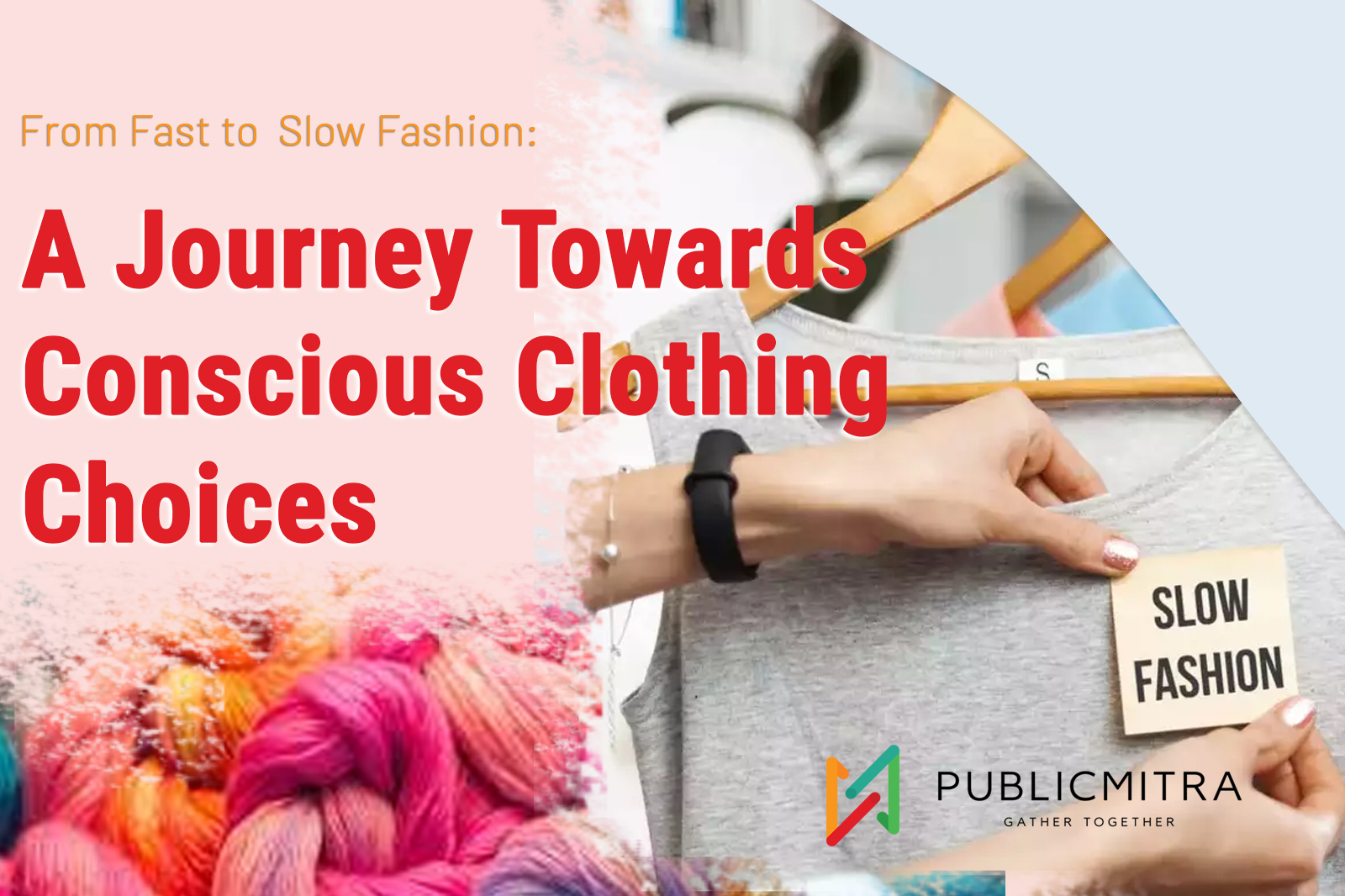From Fast To Slow Fashion: A Journey Towards Conscious Clothing Choices
Overview
With a growing awareness of the ethical and environmental implications of our clothing choices, the fashion industry has experienced a considerable transition in recent years. The slow fashion movement, which promotes more thoughtful and environmentally friendly consumption, was born out of this trend.
Exploring the shift from fast to slow fashion and how it might lead to more responsible and rewarding choices is essential as the awareness of the negative effects of fast fashion develops. In this blog, we’ll explore how the journey from fast to slow and sustainable fashion is about making more mindful choices, both for yourself and the planet.
The Rise of Fast Fashion
The late 20th century saw the global explosion of fast fashion, defined by lightning-fast manufacturing and a steady change in garment patterns. Shop giants such as Zara, H&M, and Forever 21 enabled shoppers to keep up with the newest trends without going over budget. However, there was a price for this convenience.
1. Environmental Impact: The fast fashion industry produces a great deal of pollution and waste. The continual flow of new fashions leads to garments and textiles being tossed away, where they wind up in landfills that could take years to decompose. Additionally, the industrial procedures employ a lot of energy and water, which deteriorates the environment.
2. Exploitative Labour Practises: A lot of fast-fashion companies outsource their production to countries with cheaper labor prices, but these workers often face poor wages and working conditions. The treatment of garment workers is a matter of ethical concern in light of this exploitation.
3. Low-Quality Garments: Fast fashion products are usually composed of low-quality materials and are designed to be worn out quickly. This promotes a throwaway mentality towards clothing, with things breaking apart and needing to be replaced more frequently.
Understanding Slow Fashion
The fast fashion industry is vastly different from the slow fashion movement. It motivates shoppers to choose apparel in a more thoughtful, ethical, and ecological manner. This is the path of slow fashion:
1. Mindful Consumption: A more deliberate approach to shopping is encouraged by slow fashion. Instead of chasing fads, it encourages shoppers to consider their options and spend their money on classic, well-made items that will last for years.
2. Ethical Sourcing: Ethical production methods are frequently given top priority by slow fashion clothing labels. Their goal is to guarantee their workers equitable pay and secure working environments.
3. Sustainable Materials: Using eco-friendly and sustainable materials, such as organic cotton, hemp, and recycled textiles, is a major component of slow fashion. These decisions lessen their detrimental effects on the environment.
4. Local and Artisanal Production: To promote regional artists and lessen the carbon footprint associated with international product shipping, some slow fashion firms opt to make their items locally.
5. Garment Maintenance: Supporters of slow and sustainable fashion promote suitable apparel maintenance to prolong the lifespan of clothing. Reusing, modifying, and repairing items are widespread practices that reduce waste production.
Benefits of Slow Fashion
Transitioning from fast to sustainable slow fashion comes with several benefits:
1. Sustainability: Nonfast fashion lessens the apparel industry’s negative environmental effects. Customers can lessen waste and the need for resource-intensive production techniques by prioritizing quality over quantity.
2. Ethical Practises: Promoting fair labor practices and safer working conditions for garment workers is often associated with supporting slow fashion firms.
3. Longevity: Slow-fashion clothing is made to last, which lowers the need for replacements and ultimately saves money.
4. Linkage: Adopting a slow fashion approach can strengthen your bond with the apparel you wear. You’ll know more about the origins and manufacturing processes of your clothing.
Fast to Slow Fashion Transition
Although switching from fast to slow fashion can be intimidating, it’s worth the effort. The following actions can help you embrace making thoughtful, slow clothing choices:
1. Educate Yourself: Get familiar with the moral and environmental concerns raised by the fashion industry. Making wise decisions starts with understanding the issues.
2. Shop Carefully: Prior to making a purchase, determine whether you actually need the item and, if so, whether there is a more ethical and sustainable option.
3. Promote Slow Fashion Brands: Look for slow fashion companies that share your principles. Seek for those who place a high value on sustainability, openness, and quality.
4. Reduce, Reuse, Recycle: Make sure to take good care of your clothing, fix it when necessary, and donate or recycle any pieces you no longer need. This will help it last longer.
5. Adopt Second-Hand Shopping: Vintage clothing and thrift stores are great places to find one-of-a-kind items and lessen the environmental footprint.
Takeaway
You can contribute to changing the fashion industry and advancing towards a more ethical and sustainable future by adopting conscious fashion choices. It’s a journey that helps the world and enables you to demonstrate your distinctive taste through more carefully chosen clothing.












